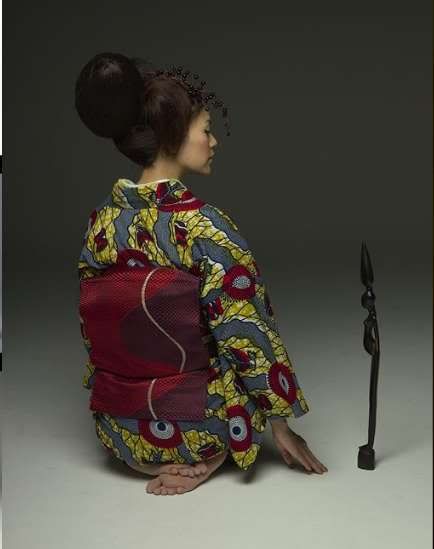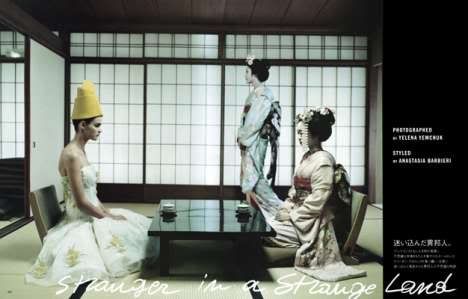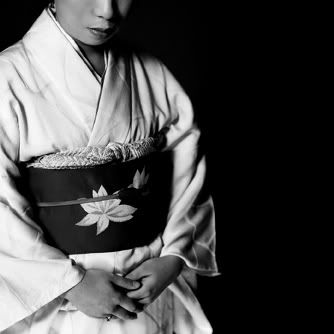Kyoto's entertainment districts captured in photo book
Hiroko Ihara, Daily Yomiuri Staff Writer
http://www.yomiuri.co.jp/dy/features/culture/20080522TDY16003.htm
KYOTO--A recently published photographic guide to five Kyoto entertainment districts has been widely praised, both for the succinct introduction it offers newcomers to the city's traditions and culture and the spotlight it places on the area's retention of long-standing Japanese customs.
"Kyoto, an Ancient Capital of Traditional Culture and Musical Art," which features 81 pages of widely varied color photographs accompanied by English text, is the first book of its kind, according to its publisher, the Kyoto Traditional Musical Art Foundation (nicknamed Okini Zaidan).
"We've been told it's very helpful, because there was no material like this [about Kyoto's entertainment districts]. The photos provide a brilliant visual guide for the foreign audience," said Osamu Ito, the secretary of Okini Zaidan.
About 10,000 copies have been given free of charge to people and organizations involved with introducing Japanese culture to the international community, such as tour guides, researchers, universities and international exchange groups.
The about 200 photographs featured in the book were taken by Hiroshi Mizobuchi, a photographer based in Uji, Kyoto Prefecture. Having shot Kyoto's entertainment districts for the past 35 years and published more than 10 collections on the theme, Mizobuchi has a deep understanding of the area.
His work in the Kyoto guide casts light on every aspect of life in the entertainment districts, called "hanamachi" or "kagai," but it pays particular attention to geiko, entertainers who have mastered their techniques, and apprentices to the trade, who are known as maiko.
A number of annual events are featured, starting with the Shigyoshiki New Year ceremony, which sees the geiko and maiko appear wearing hair ornaments made of rice plants and formal black kimono with patterns on the bottom.
Kyoto's natural scenery, famously distinct from season to season, is beautifully captured in pictures of dance performances by geiko and maiko at different times of year. Their contribution to the festive atmosphere at annual events like the Gion Festival in July and the Kaomise all-star-cast kabuki performance in December is delightfully evident.
Elsewhere, Mizobuchi's pictures show the geiko and maiko performing for customers at ochaya teahouses, their day-to-day workplace.
Other sections of the book go behind the scenes: Brief pictorial essays reveal how to put on a kimono, apply makeup and do hair in the style of geiko and maiko.
Mizobuchi said: "Their culture and lifestyle used to be part of the Japanese way of life. They're separated a bit from ordinary Japanese these days, but they're still active in these districts."
He recalls a time, several years after he first began photographing maiko and geiko, when trade in the districts was declining. The proprietor of an ochaya in the Gion Kobu entertainment district told him: "The number of maiko in my district is down to 10. You're taking our photos at the right time--we might become extinct."
The comment spurred Mizobuchi to expand his focus to include the entire district, taking in its landscape and events as well as its people.
Fortunately, the districts' fortunes revived, and there are now about 100 maiko working in Kyoto. "Their training consists of Japanese dance, learning about the tea ceremony, flower arrangement, and playing musical instruments. It's very severe. Those who come from outside Kyoto also need to acquire an elegant Kyoto accent," Mizobuchi said, noting that only one out of 10 trainees actually go on to become maiko.
"But those who hang on are extremely lively and dedicated. It's a special thing," he said.
Here's the thing: the foundation is making the book available to Daily Yomiuri readers free of charge. Hiroshi Mizubushi 溝縁ひろし is the unofficial official geisha photographer in Kyoto (his books are sold at the district odori).
 Gion Kouta Festival
Gion Kouta Festival





